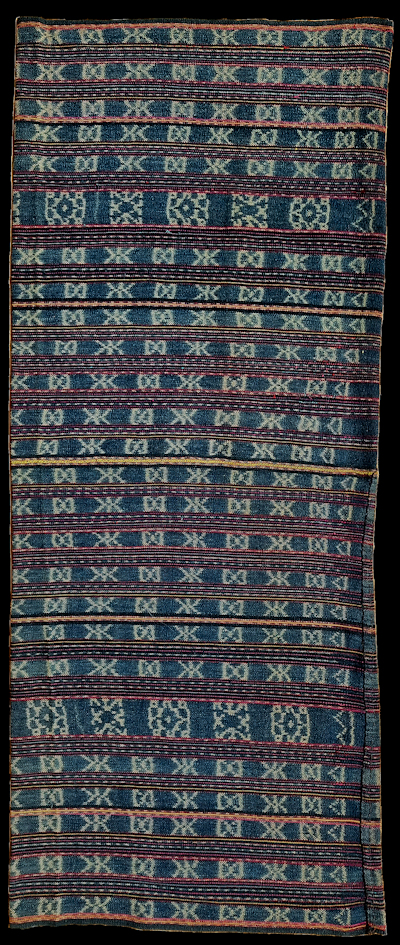| |
 
 | | | |
337 Solor Archipelago, Solor
Kewatek (sarong) 
| | Locale: | Tanalein, on the south coast of the island | | Period: | Circa 1920-1930 | | Yarn: | Cotton, hand-spun, medium, with narrow pinstripes in commercial cotton | | Technique: | Warp ikat | | Panels: | 2 | | Design: | Kewatek kemata, bridewealth sarong in characteristic design: numerous stripes and narrow ikated bands. Natural dyes include indigo and ceriops tagal bark. One of the motifs used in the wider ikated bands (2nd and 4th from the left in the upper half, 1st and 3rd in the lower half) is a version of the keu motif described in ten Hoopen 2022:146-153, but not previously encountered on Solor. | | Comment: | Kewatek kemeta, the traditional adat sarong that serves as a formal gift at funerals, and as bridewealth, given by the bride-givers to the bride-takers. The Tanalein region is the most traditional on the island, and while the pattern may be relatively simple, this type of sarong is the most respected and valuable. The kewatek kemeta may of course only be made with hand spun yarn and vegetable dyes. Well made pieces with 'a certain age' are rare, found mostly in museums with older collections, where they are sometimes mislabeled Flores or Larantuka (port in East Flores nearest Solor), as this is where they were collected. Excellent state of preservation. The cloth was originally thought to have been made around 1940, but microscopic study of the handspun yarn showed advanced degradation, in (little used) ceremonial cloth more commonly seen specimens of a hundred years old. | | Background: | Chapters on Solor Archipelago and Solor. | | Compare: | 179 | | |

©Peter ten Hoopen, 2024
All rights reserved.
|
|


